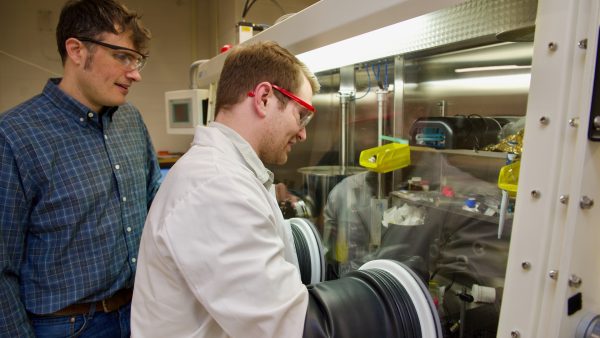Chemical Connections

Working weekends as an emergency medical technician while an undergraduate at UNC Charlotte, Andrew Brotherton ’22 learned that quick, accurate diagnosis of heart attacks saves lives and improves patient outcomes. He also realized that emergency responders — and patients — would benefit from diagnostic tools on ambulances and fire trucks.
“There is no worse feeling than having someone’s life in your hands and not being able to help,” Brotherton said.
Now, he is working to invent a new tool for exactly that purpose as a doctoral student in chemistry at Northwestern University. His research is funded by a National Science Foundation Graduate Research Fellowship awarded while he was at Charlotte.
“With the biosensor I am developing,” Brotherton said, “an EMT could prick a patient’s finger, get the patient’s blood and test their troponin levels, which is an indication of a heart attack that you can’t see with an electrocardiogram. Troponin is an enzyme that heart muscle cells excrete when someone is having a heart attack.”
If the biomarker test shows that cardiac-specific troponin has leaked into the bloodstream, emergency responders could give more detailed and immediate data to doctors, provide targeted treatment and potentially route patients directly to cardiac units or hospitals with more specialized services.
Currently, such blood tests are not routinely used in the field for many reasons including a need to send the blood samples to labs for analysis. The main tool available to medical responders for suspected heart attacks is the electrocardiogram machine, which measures and records electrical signals traveling through the heart, looking for blockages or other causes.
Brotherton is investigating the use of self-assembled monolayers as biosensors. Monolayers are one-molecule-thick layers of material that bond to a surface in an ordered way through either physical or chemical forces. His aim, broadly, is to discover new properties and create new or more efficient techniques to detect disease and advance treatments to save lives.
BY LYNN ROBERSON
Read More at UNC Charlotte Digital Features